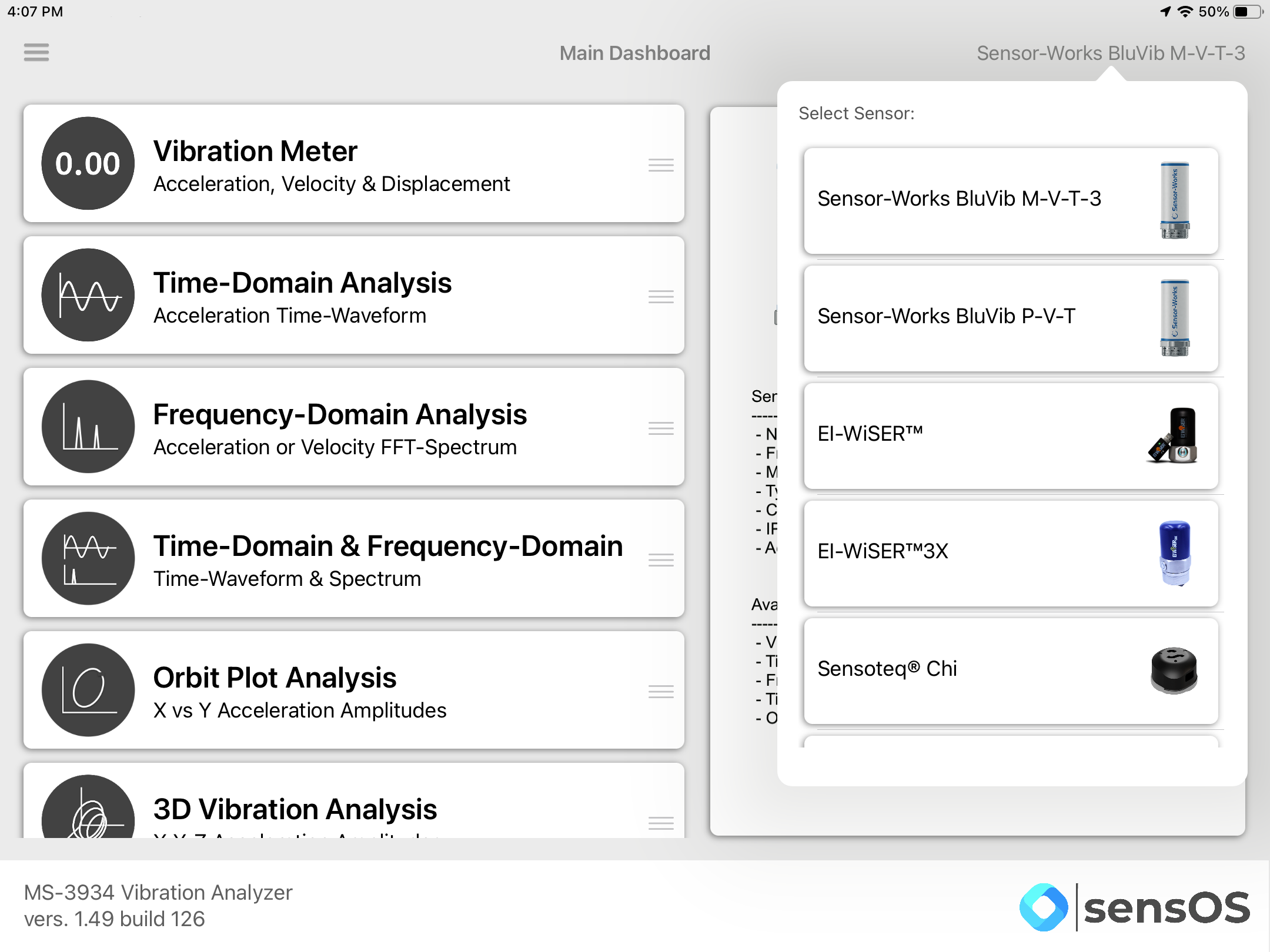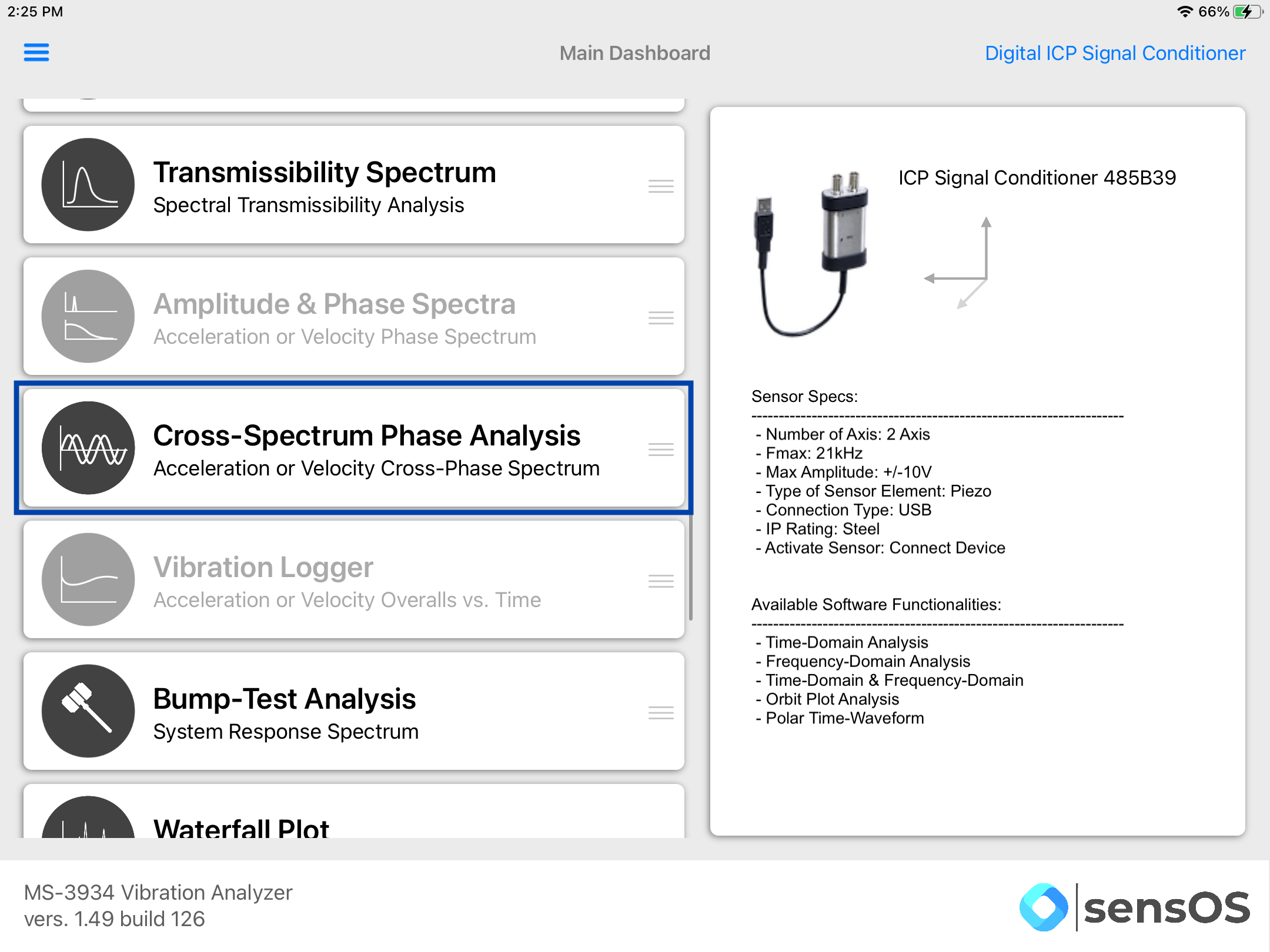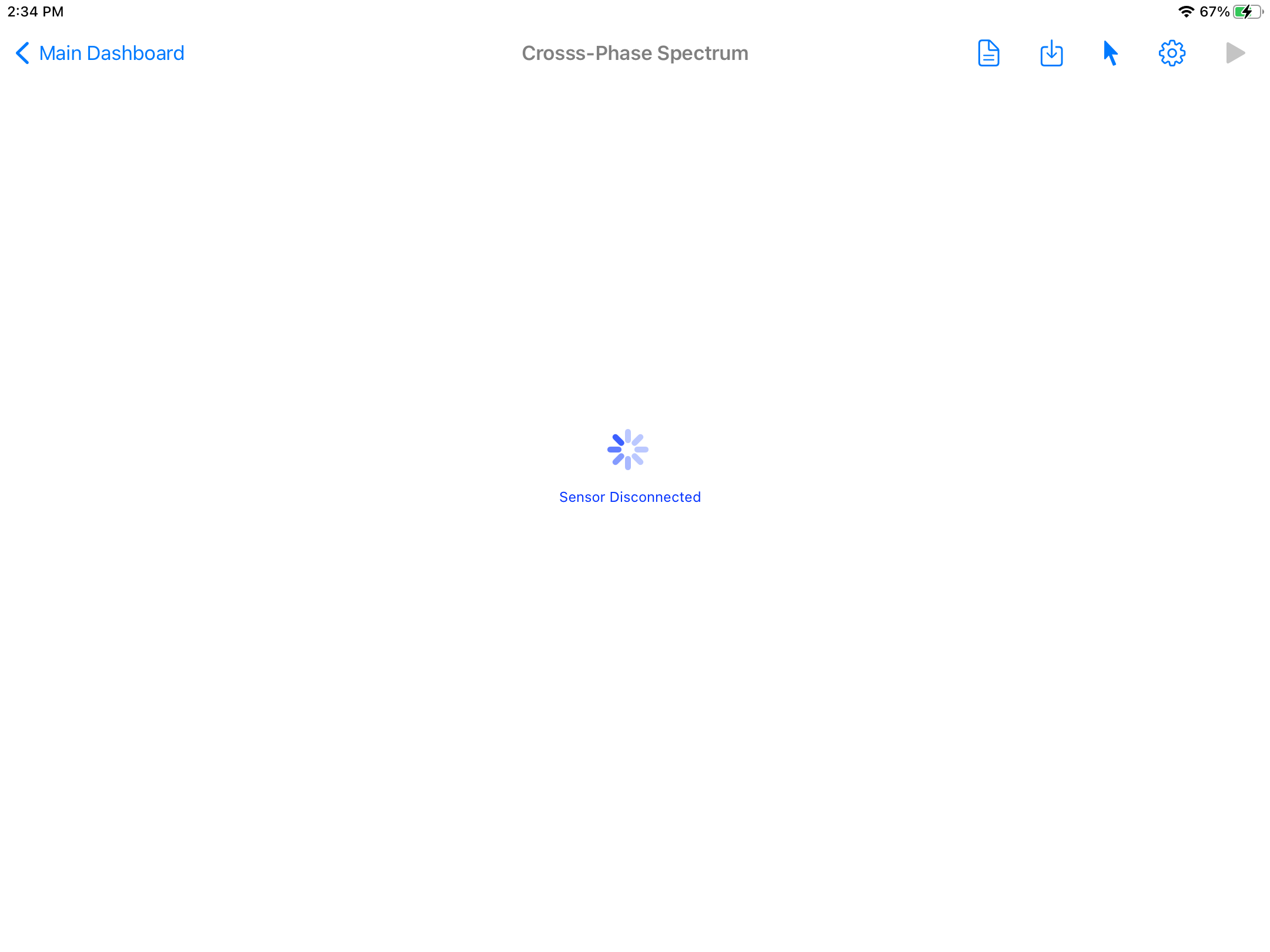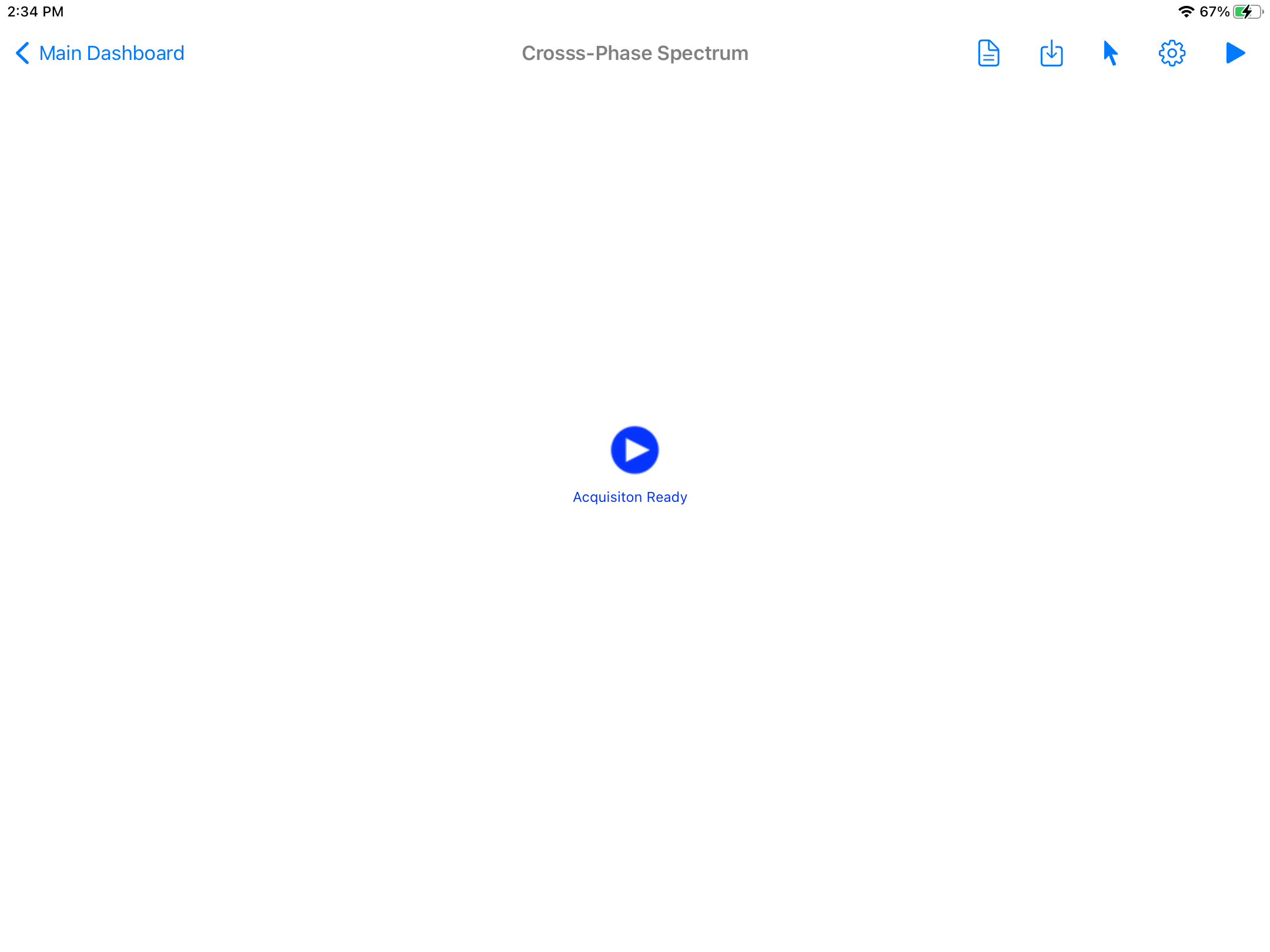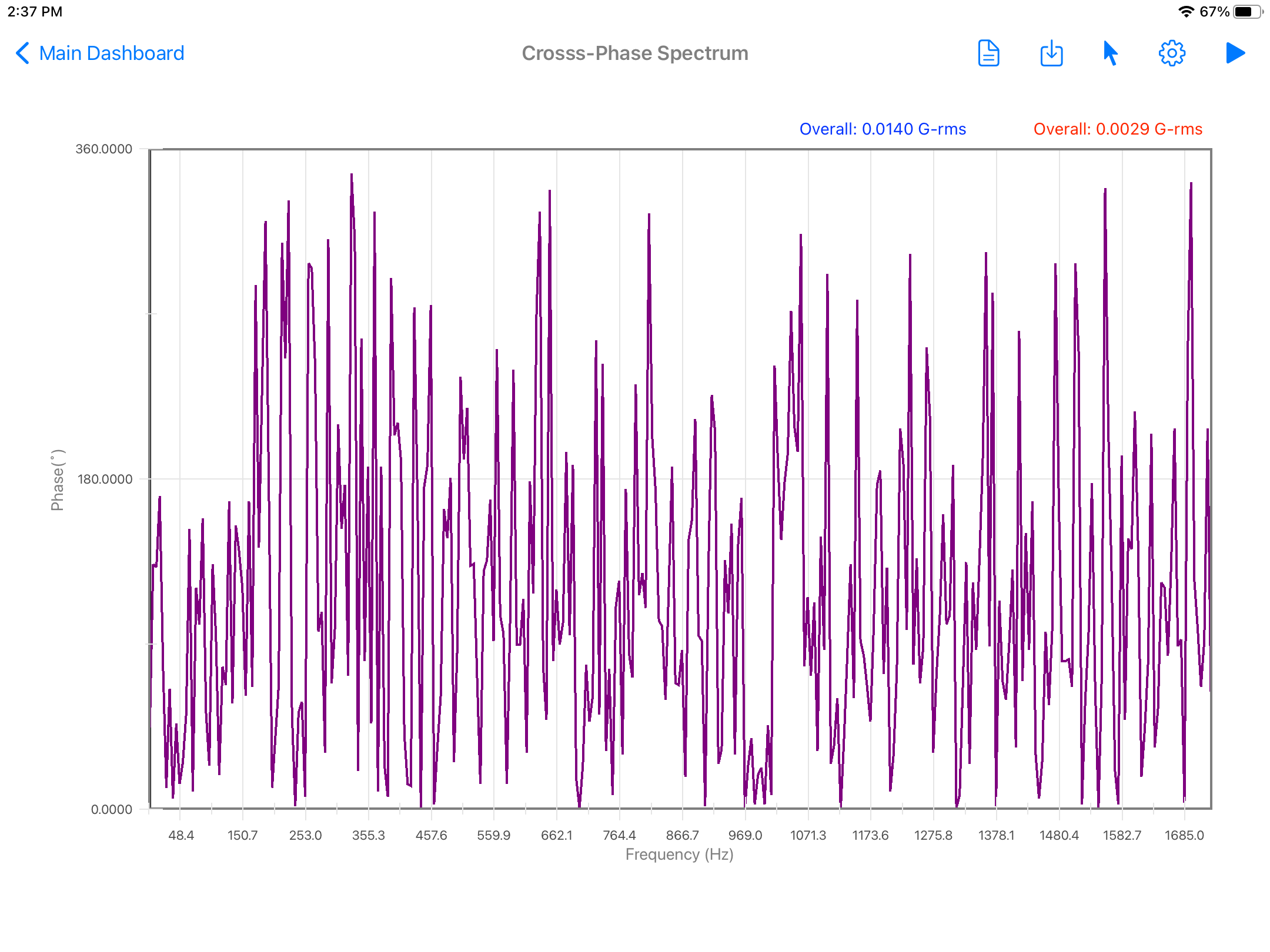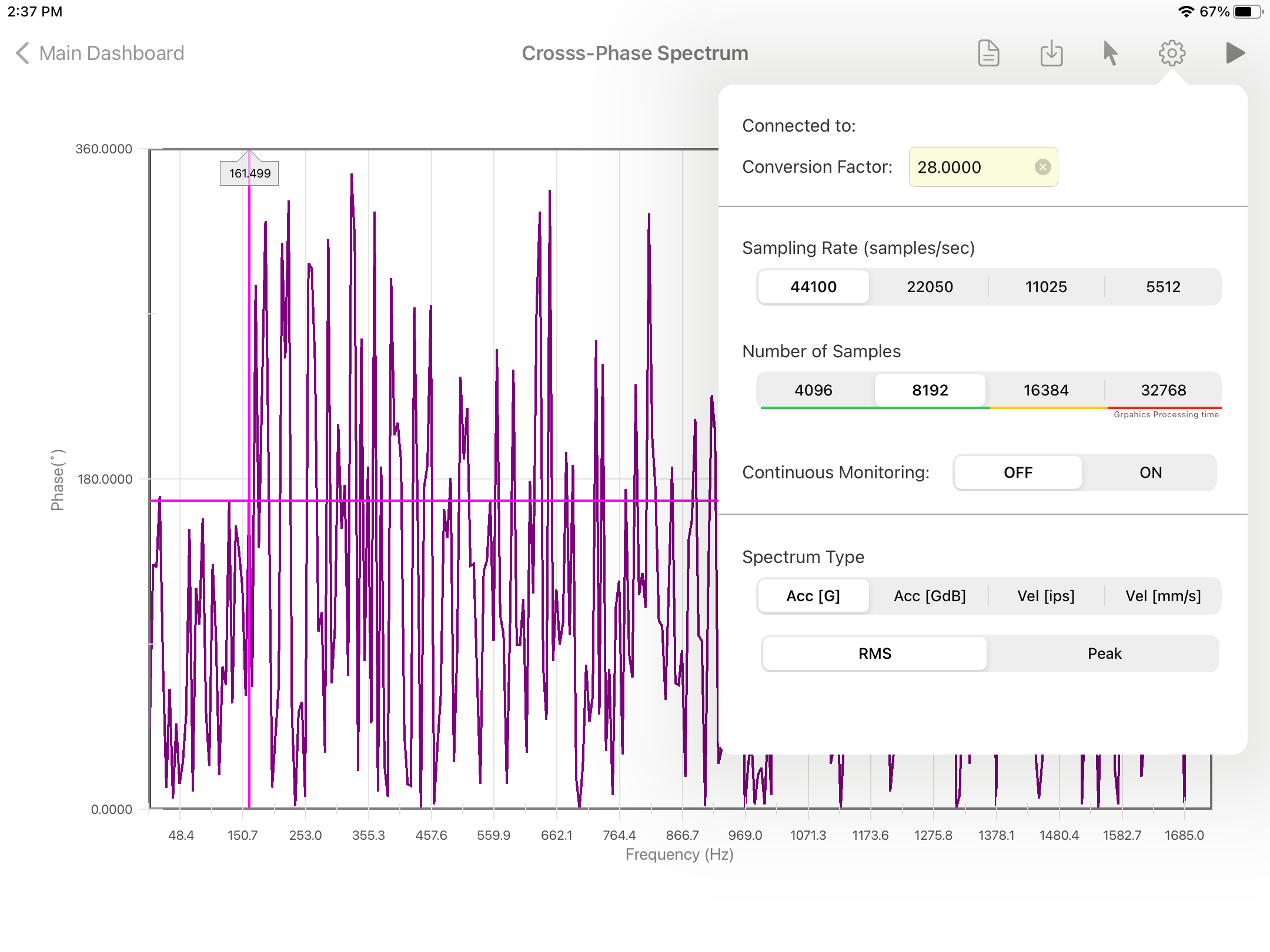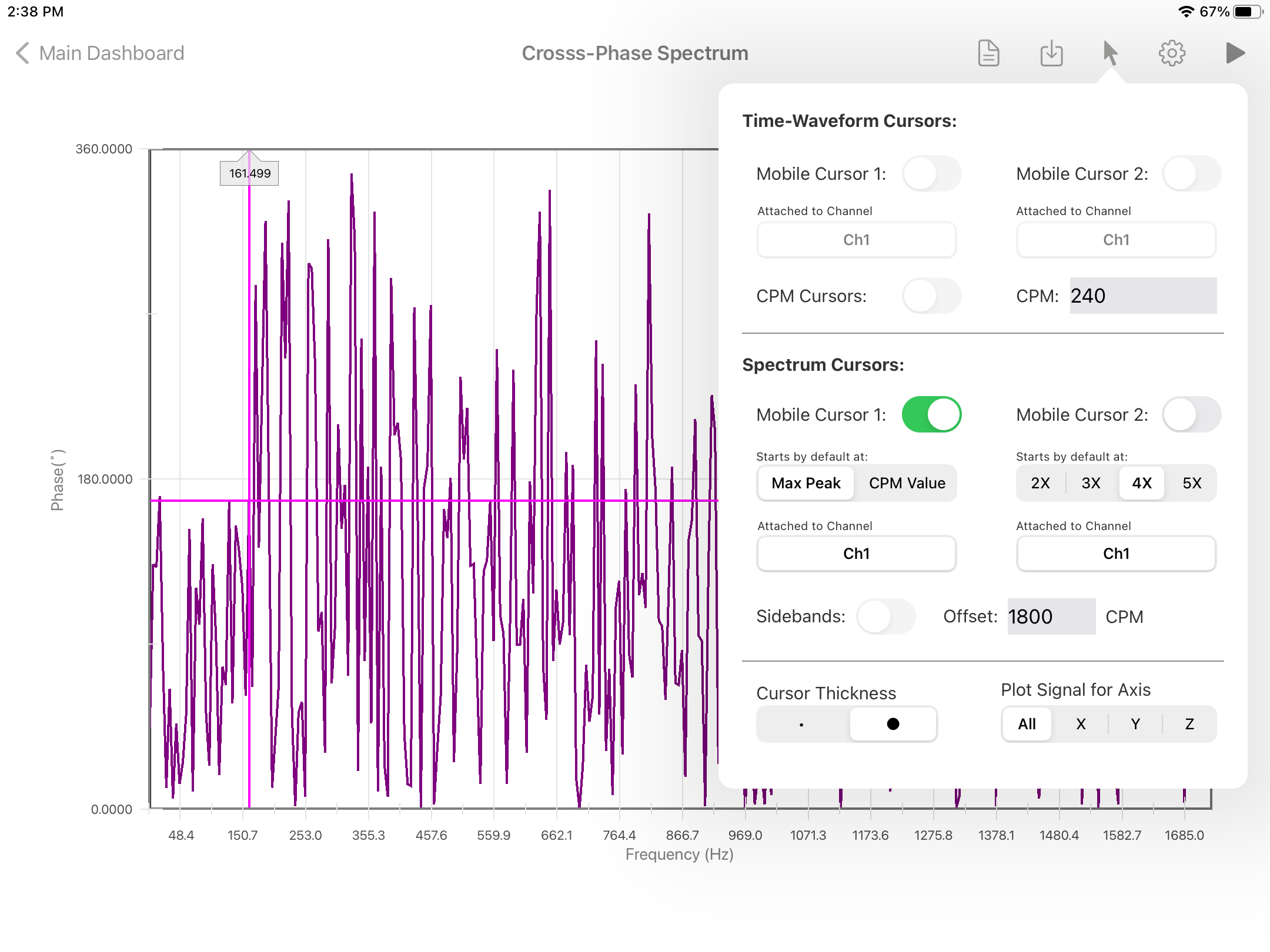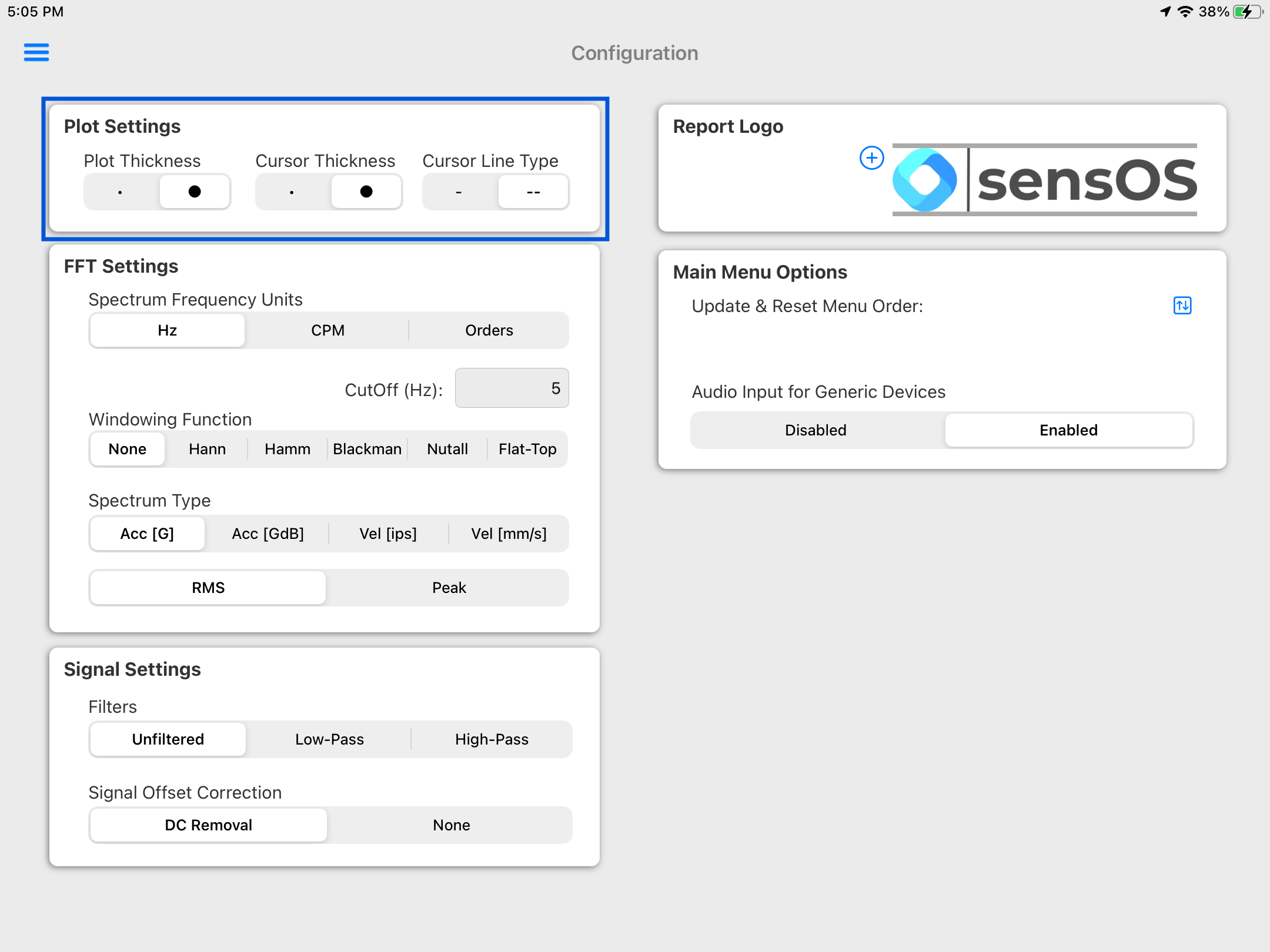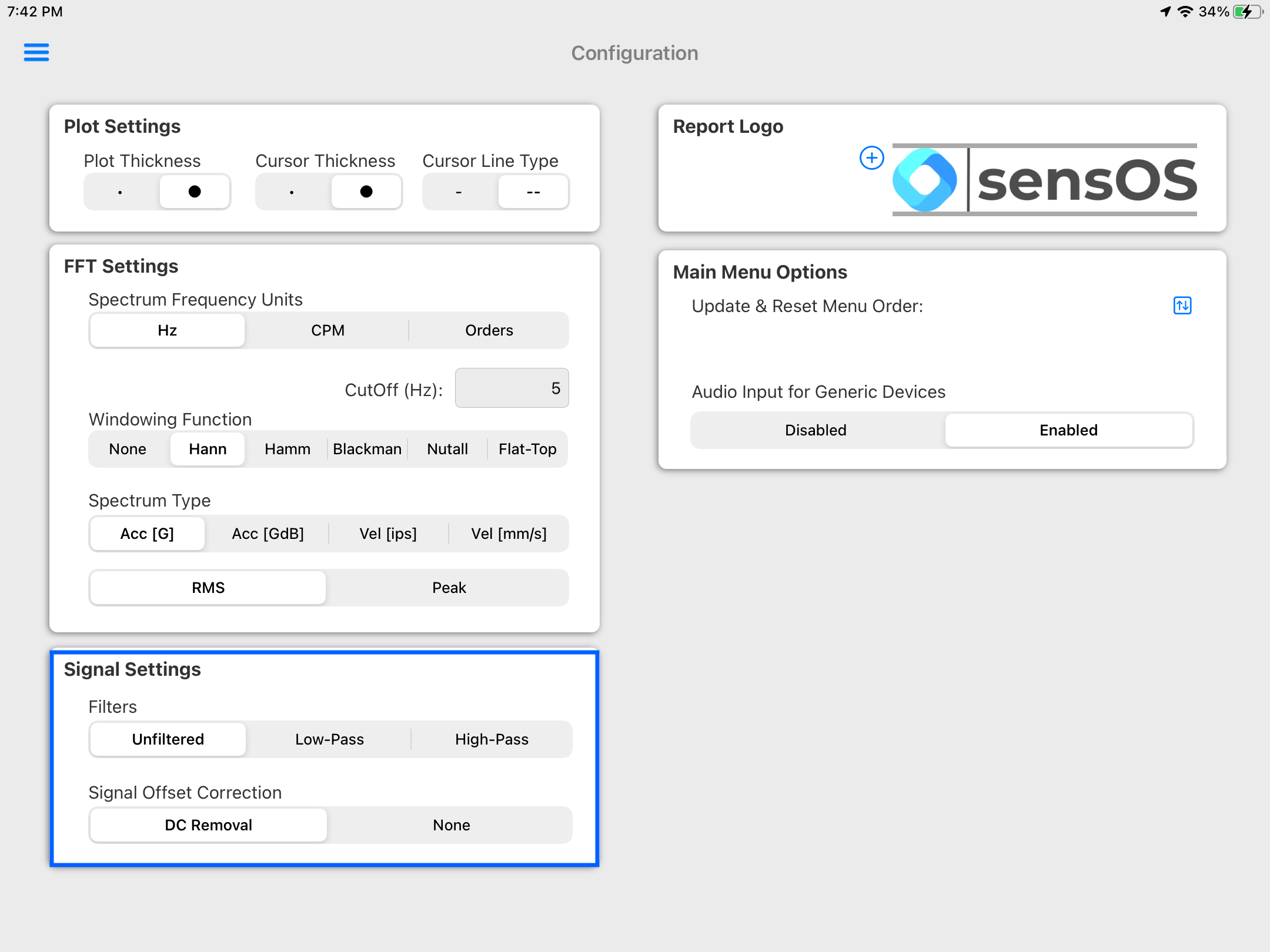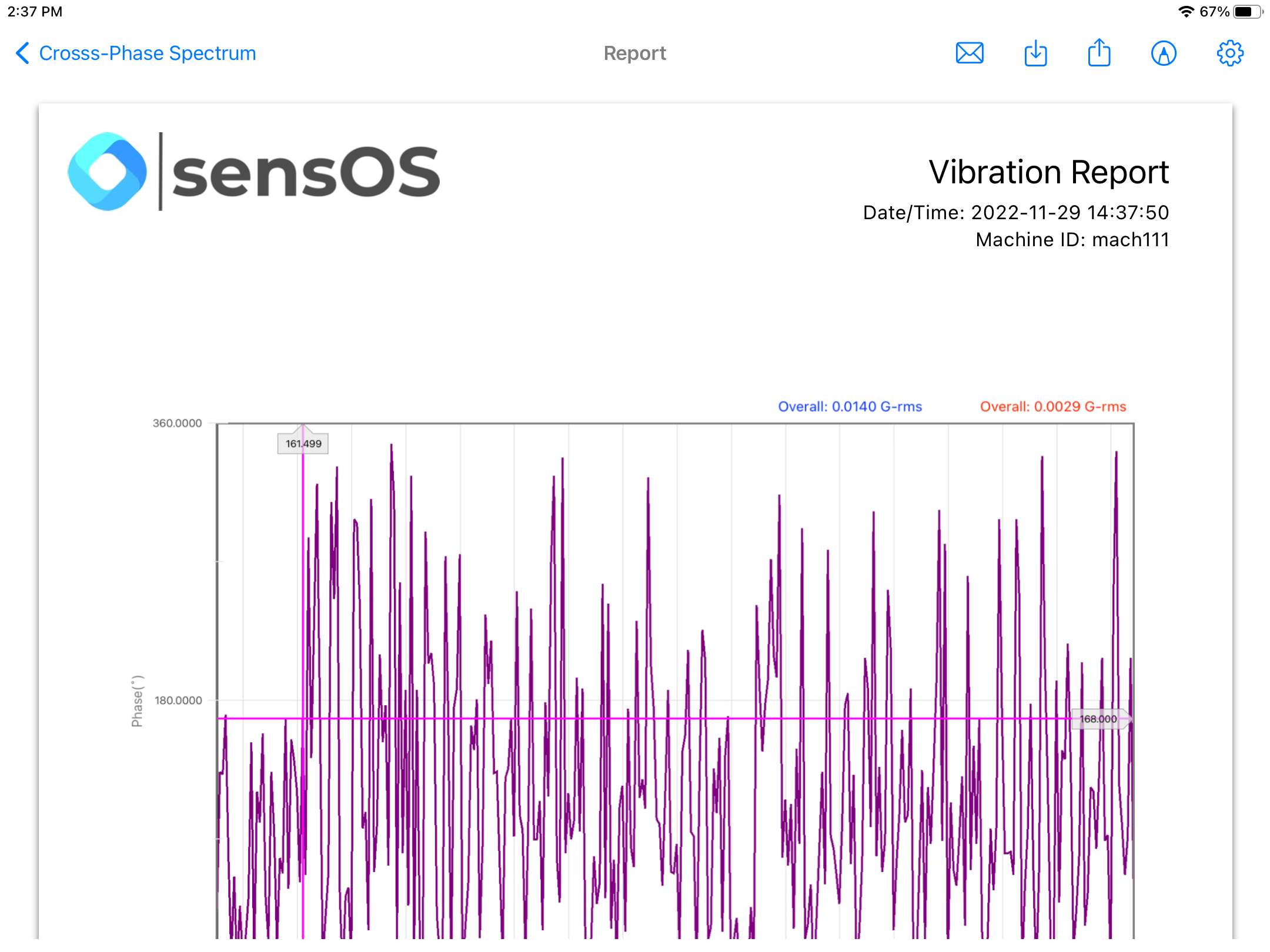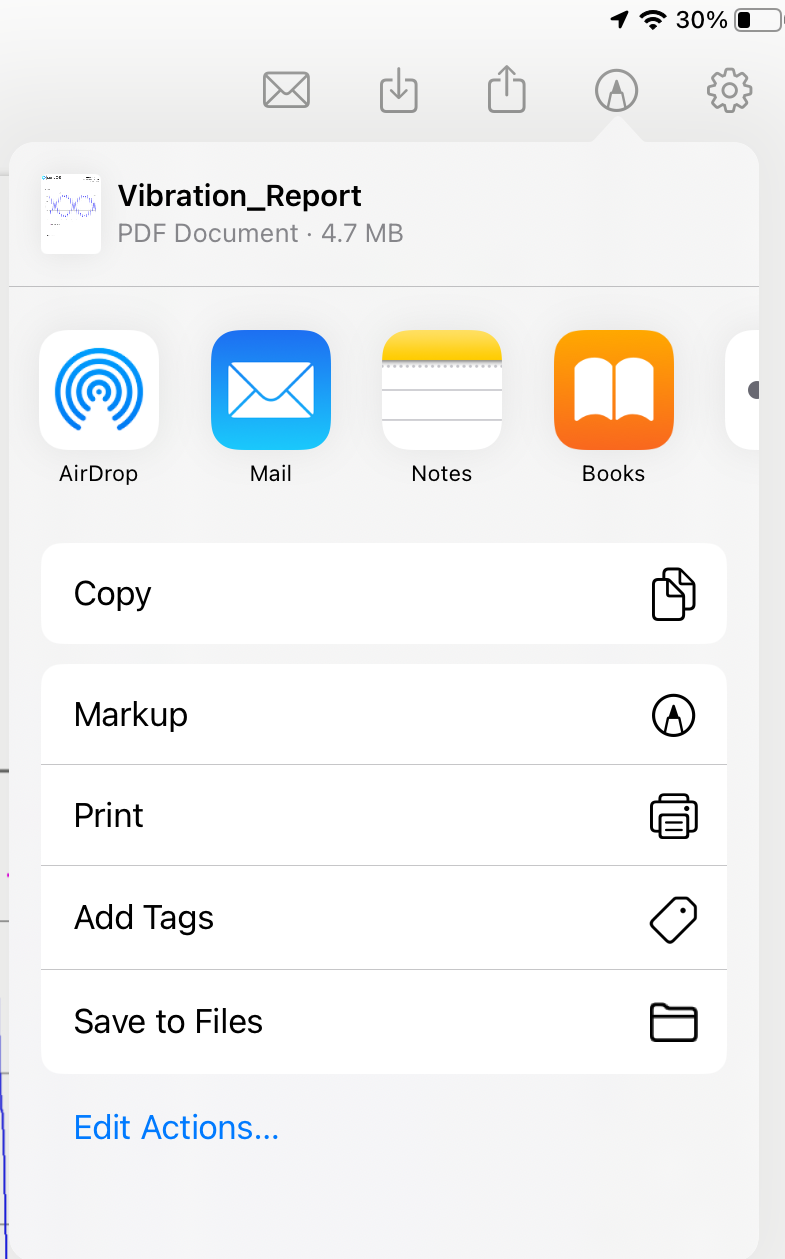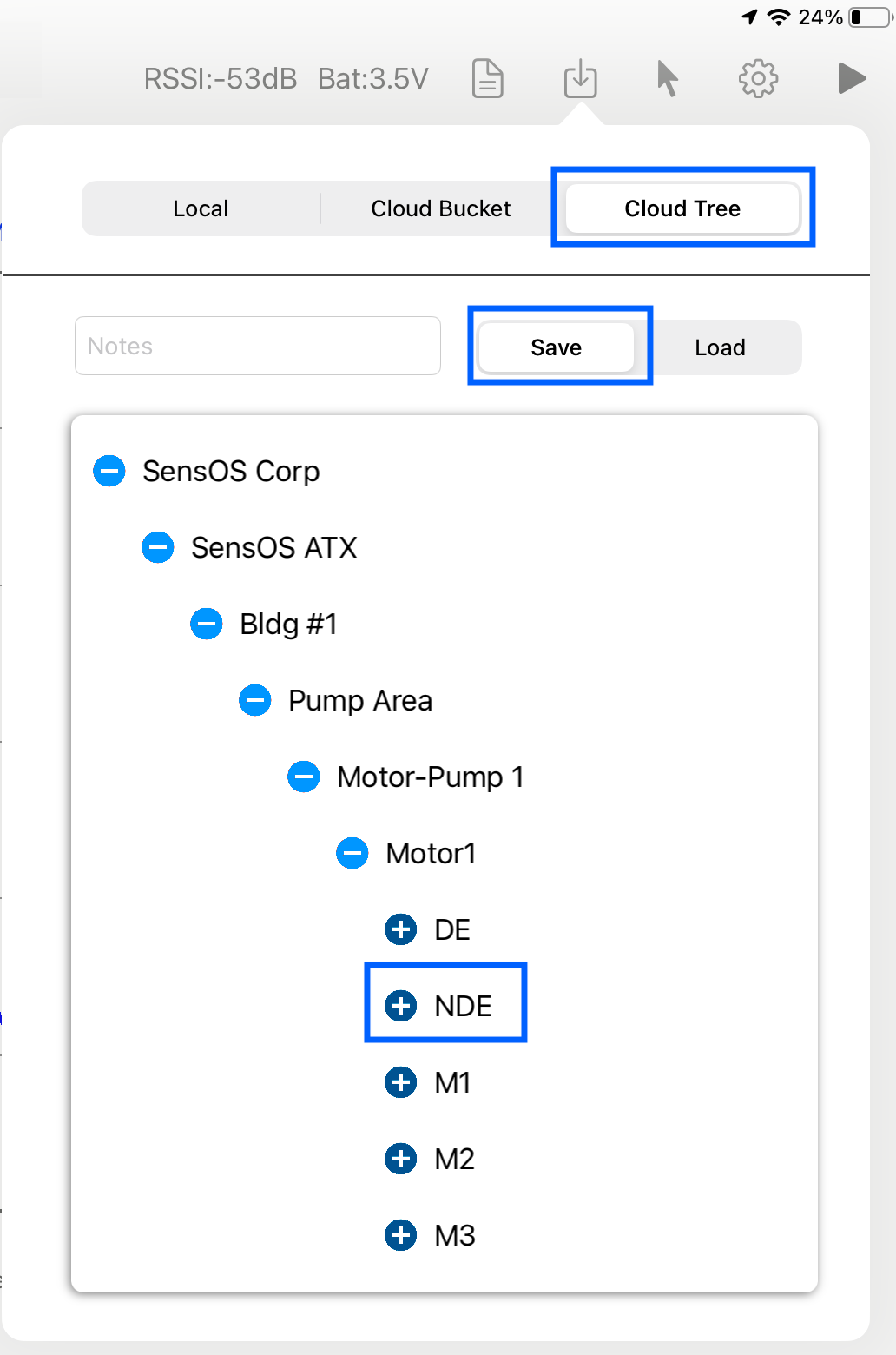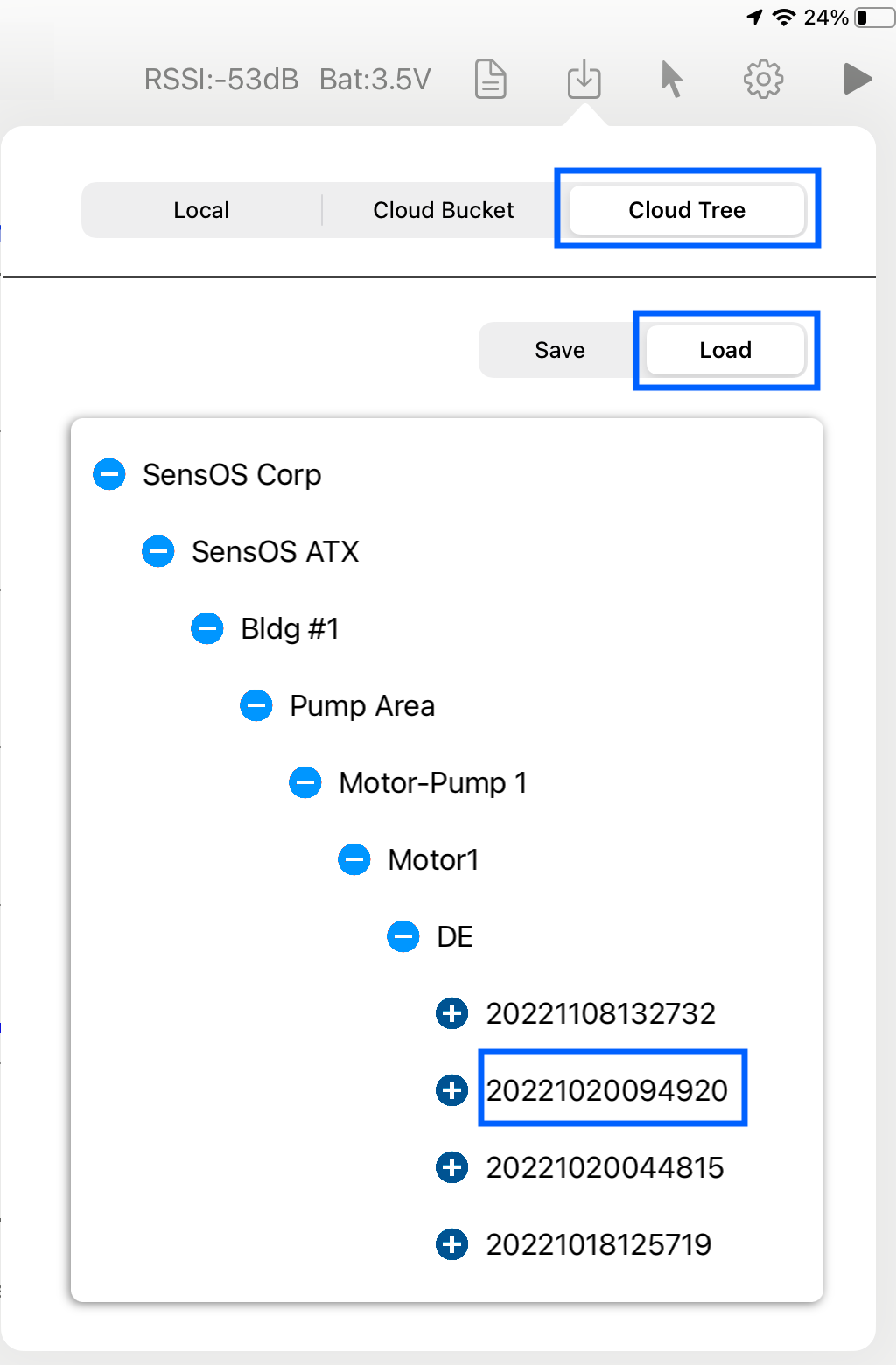Documentation
3934 Cross-Spectrum Phase Analysis
MS-3934: Vibration Analysis Studio iPadOS® version
- Version: 1.49 (b.126)
- Author: D. Bukowitz
- Created: 04 Mar, 2021
- Update: 21 Nov, 2022
If you have any questions that are beyond the scope of this document, Please feel free to email via info@sens-os.com
Description
This module will plot the spectrum of the cross-relative phase between to vibration signals.
Compatibility
This module is compatible with the following sensors:
- Digital ICP Signal Conditiones (2 Axis)
- EI-Wiser™ (2 Axis)
Main Menu
- Tap on the Sensor name button to open the list of available sensors, and select the sensor type from the list
- Select the Cross-Spectrum Phase Analysis option from the list.
Note: The user can change the order of the functionalities in the list by dragging it from the right button on each cell
Cross-Spectrum Phase Analysis
- The Start button will be disabled initially, until the sensor is connected.
- Once the sensor is connected the startbutton will be enabled, as shown in the screenshot below. Place the 2 sensors on the machine locations to be analyzed.
- Click on the start ▶︎ button to take a reading. To zoom the plot use both fingers to pinch in and out, to pan use one finger and swipe left or right. Other options, such as windowing, filtering and cut-off value can be modified in the general Configuration view. See Configuration for more details.
- The settings pop-up will allow the user to change the spectrum type to Acceleration in G's, Acceleration in dB and Velocity in ips or mm/s. The sampling rate and the number of samples can also be changed here, options will depend on the available sampling rate and number of samples of each sensor.
- The spectrum manual markers are available in this module, press the cursor button and select the cursor from the pop-up box.
- A full pdf report can be generated, saved or sent by clicking on the report button, see more info in: Generating a pdf Report.
Configuration
- From the Main menu, click the top left menu button to open the left drawer with more options. Select 'Configuration' from the left menu
- Select the Plot Thickness, Cursor Thickness and/or Cursor Line Type from the Plot Settings selectors.
- The Signal Settings will affect the raw data directly. The DC-Removal is ON by default by can be turned OFF here. Also a general Low-Pass or High_pass filter can be applied to the signal.
- The FFT Settings will be set as defaults for all readings. Here the user can change the spectrum frequency units to Hz, CPM or Orders. A Cut-Off value can be added to remove low frequency values. Also windowing can be selected for the spectrum, the available options are: None, Hanning, Hamming, Blackman, Nutall and Flat-Top. The spectrum type and RMS/Pk values can be set as defaults here, but can also be changed in the settings pop-up of the spectrum.
Note: This selection will affect all reading's raw data for all modules
Report
- The report view contains several options in the top bar menu: 1:Send by Email, 2:Save pdf locally, 3:Upload Report to the Cloud bucket, 4:Markup and 5:Report Configuration
- The markup tool allows the user to copy the report to the clipboard, send it by Airdrop or any other messaging app, email it, print it or saved it to Files. The markup tool will open the standard tool to paint on the pdf report.
- The Report Configuration pop-up allows the user to enter the Report Title, Machine ID and Notes to be added to the report. Here the user can also select a logo for the report and include a picture of the asset that will be added in a new page in the report. The report file name be default is the actual date and time, but the user can change it to the title name of the report or to both, the title name and date.
Files & Data
- By selecting the Files & Data button in the top bar, the user can save/load the vibration data locally, in the cloud bucket or in the cloud hierarchy tree.
- To save data locally, select the 'Local' option in the first selector and then select 'Save' in the selector below. By default the name of the file will be the timestamp, but the user can customize it here and click on the blue save button on the right.
- To load data locally, select the 'Local' option in the first selector and then select 'Load' in the selector below. A list of all available local files will appear, tap on the desired file and it will load and process in the actual plot.
- To save data on the user's cloud bucket, select the 'Cloud Bucket' option in the first selector and then select 'Save' in the selector below. By default the name of the file will be the timestamp, but the user can customize it here and click on the blue save button on the right, this will upload the data file to the user's cloud bucket.
- To load data from the user's cloud bucket, select the 'Cloud Bucket' option in the first selector and then select 'Load' in the selector below. A list of all available local files will appear, tap on the desired file and it will load and process in the actual plot.
- To save data on the user's hierarchy tree, select the 'Cloud Tree' option in the first selector and then select 'Save' in the selector below. The user's hierarchy tree will appear, navigate to the point to save the data by clicking on each location, machine, component, and point.
- To load data from the user's hierarchy tree, select the 'Cloud Tree' option in the first selector and then select 'Load' in the selector below. The user's hierarchy tree will appear, navigate to the desired reading (timestamp) by clicking on the desired locations, machine, component and point.
Changelog
See what's new added, changed, fixed, improved or updated in the latest versions.
Version 1.49 b.126 (21 Nov, 2022)
- Optimized Optimized for iPadOS 16
Version 1.33 b.103 (24 Feb, 2022)
- Fixed Bug Fixed
Version 1.01 b.51 (04 Mar, 2021)
Initial Release
